
古地理学报(英文版)(Journal of Palaeogeography) 知网万方维普目次
- CSCD
- 高T1
- 主管单位:
教育部
- 主办单位:
中国石油大学(北京)、科学出版社
- 国际刊号:
2095-3836;EISSN2524-4507
- 国内刊号:
10-1041/P
- 学科分类:
- 字数:
26000-82000
- 有无基金:
/有基金 100.0%
- 周期:
CN外文-季刊
- 特殊属性:
第一批认定学术期刊
- 电话:
010-62396149,62394320(202203期)
- 邮箱:
jpalaeo2012@163.com(202203期)
- 复合因子:
0.733
- 综合因子:
0.483
- 收录:
知网,万方,维普目次
- 级别:
CSCD,高T1
- 杂志社官网:
- 投稿网址: https://www.editorialmanager.com/jopal/
期刊简介
《古地理学报》期刊已被查看: 次
更新频次
单位占比
一作占比
/有基金-100.0%投稿指南
1、投稿方式:在线投稿。
2、刊内网址:
http://journal09.magtechjournal.com/Jweb_jop
http://www.journals.elsevier.com/journal-of-palaeogeography/
3、投稿系统:
https://www.editorialmanager.com/jopal/
4、出刊日期:季刊,逢季首月出版。
5、官网QQ群:834082164
2022年9月6日星期二
《古地理学报(英文版)》投稿通则
【2022年03期信息】
General regulations about submitting manuscripts to Journal of Palaeogeography
1. Journal of Palaeogeography is an academic Earth science journal. The journal mainly publishes research results and original academic articles focusing on palaeogeography and relevant disciplines by both Chinese and foreign scholars, including lithofacies palaeogeography, biopalaeogeography, stratigraphic palaeogeography, tectonopalaeogeography, physiogeographic palaeogeography, human history palaeogeography, past and present environments and human civilization, sedimentology, sedimentary environments, sedimentary facies, geochemistry, palaeoecology, ichnology, palaeoclimatology, palaeotectonics, palaeoseismology, palaeokarst, basin analysis, prediction and exploration related with oil, gas, coal and other mineral resources.
Journal of Palaeogeography is an Open Access (OA) publication journal with APC fully covered by China University of Petroleum (Beijing).
2. The length for academic manuscripts should be less than 30 pages (Times New Roman, 12 pt, double spaced), i.e., less than 15 pages if accepted and formally typesetted to be published in the Journal.
3. Constitution and order of manuscript. Title, author’s name, affiliation and address of the author, correspondence address, postcode, abstract (300-500 words), key words (4-8words), text of the paper, acknowledgements, references, supplements (if applicable).
4. Other requirements for manuscript. The figures, with the largest size of 170 mm × 240 mm, should be put in the text, and the resolution of the figure should be 600 dpi. Photos and figures are numbered according to the order. The photo title and figure title are arranged below the photo and figure. Illustrations of the photos and figures are written below the photo title or figure title. Tables with the largest size of 170 mm × 240 mm, rearranged in the text. The table title is arranged above the table.
5. Requirements for references. References are cited in alphabetical order of the authors’ names and the authors’ names coincide with the original references. Both Chinese and foreign authors’ names are written according to international convention. Only full articles that have been published or are ‘in press’ may be included in the reference list. In the text, references should be cited by giving the author’s name with the year of publication in parentheses, and should be listed according to publication time order (e.g. Jones, 1982; Adams, 1985). When reference is made to a work by three or more authors, the first name followed by et al. should be used in the text on all occasions. If several papers by the same author and from the same year are cited, a, b, c, etc. should be put after the year of publication. References should be listed in alphabetical order at the end of the paper in the following standard form:
Periodicals: Author’s name (all of the authors’ names should be listed and separated by comma), Publication year. Manuscript title. Periodical’s name (italicized), Volume (issue), Starting and ending page numbers (original language).
With only one author, in the text, it should be cited as: (Robert, 1990), (Feng, 1999); References should bewritten as: Robert, H., 1990; Feng, Z.Z., 1999.
With two authors, in the text, it should be cited as: (Robert and Bada, 1990), (Feng and Wang, 2000); References should be written as: Robert, H., Bada, M., 1990; Feng, Z.Z., Wang, Y., 2000.
With three or more authors, in the text, it should be cited as: (Robert et al., 1990), (Feng et al., 1990); All of the authors’names should be written in the references.
Books: Author’s name (according to the periodical’s requirement), Publication year. Book name. Press, Publication place. Starting and ending page numbers. (original language).
Collected works: Author’s name (according to the periodical’s requirement), Publication year. Manuscript title, in: Editors of the collected works, (Eds.), Name of the collected works. Press, Publication place. pp. Starting and ending page numbers (original language).
In the references, papers with two authors should follow those of the first named author, arranged in alphabetical order according to the name of the second author. Papers with three or more authors should be ordered following the name of the first author in chronological order.
6. Submission. The detailed address, post code, telephone number and email address of the author must be attached in the manuscript in order to keep contact. The domestic author must submit a manuscript with a detailed abstract in Chinese. Non-Chinese authors should submit only a manuscript. The submission system is https://www.editorialmanager.com/jopal/default1.aspx.
7. Inquiring about manuscript. The author can contact the editorial office to inquire about submitted manuscripts. Authors should receive correspondence concerning the status of their manuscripts, as well as reviews, within one or two months of submission.
8. Copyright. Upon acceptance of an article, authors will be asked to complete a ‘Journal Publishing Agreement’. Acceptance of the agreement will ensure the widest possible dissemination of information. Permission of the society is required for resale or distribution outside the institution and for all other derivative works, including compilations and translations (please consult jpalaeo2012@163.com). If excerpts from other copyrighted works are included, the author(s) must obtain written permission from the copyright owners and credit the source(s) in the article.
9. Notice. We hope authors read the regulations seriously and submit their manuscripts according to the general regulations. If you have any suggestions, please write to us. Thanks for your cooperation.
上一篇:中央社会主义学院学报(不收版面费)下一篇:国际创新研究学报(英文版)(International Journal of Innovation Studies)
《古地理学报》同类天文地球科学期刊
-
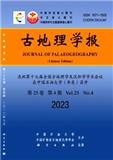
古地理学报
北核,CSCD,科核,武A,高T1
CN中文-双月刊影响因子2.974
-
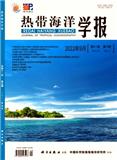
热带海洋学报
北核,CSCD,科核,高T2,武B+
CN中文-双月刊影响因子0.978
-
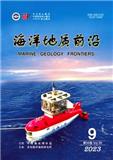
海洋地质前沿(原:海洋地质动态)
北核,CSCD,科核,高T2
CN中文-月刊影响因子1.113
-
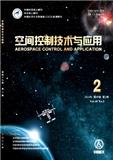
空间控制技术与应用
北核,CSCD,科核,武B+
CN中文-双月刊影响因子1.174
-
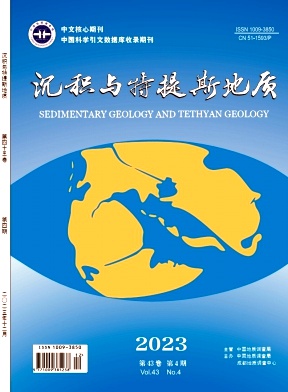
沉积与特提斯地质
北核,科核,CSCD扩,高T2,武B+
CN中文-季刊影响因子2.266
-
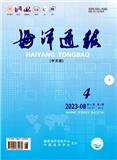
海洋通报
北核,CSCD,科核,高T2,武B+
CN中文-双月刊影响因子1.295
-
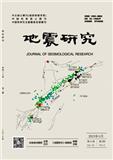
地震研究
北核,科核,CSCD扩,高T2,高T3,CACJ-核心
CN中文-季刊影响因子1.467
-
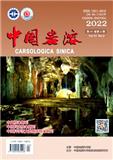
中国岩溶
北核,科核,CSCD扩,高T2,武B+
CN中文-双月刊影响因子1.833
常见问题
-
古地理学报杂志社官网、联系方式是什么?
古地理学报 投稿网址:https://www.editorialmanager.com/jopal/联系电话:010-62396149,62394320(202203期)
投稿邮箱:jpalaeo2012@163.com(202203期) -
古地理学报杂志是核心期刊么?
古地理学报是核心期刊,级别是:CSCD,高T1, 是:天文地球科学分类下的知网,万方,维普目次收录的期刊。
-
请问你们是古地理学报杂志社吗?
我们不是《古地理学报》杂志社。本站主要从事期刊信息展示与期刊推荐,不是任何杂志官网,直投稿件请联系杂志社。本站仅提供免费的学术指导、论文辅导、期刊投稿信息整理收集服务。
-
你们指导服务后可以保证文章被发表吗?
期刊发表的成功与否,主要取决于文章内容的质量。编辑老师会根据研究领域、创新性等多因素进行考量。我们会帮助您理解期刊的发表要求,助力提升发表几率,从而增加发表的机会。
-
晋级论文能否在报纸上发表?
在学术界,论文的发表往往被视为研究者职业发展的重要一环。晋级论文,即为了获得更高职称或学术地位而撰写的学术论文,通常需在专业期刊上发表。然而,许多人可能会问
